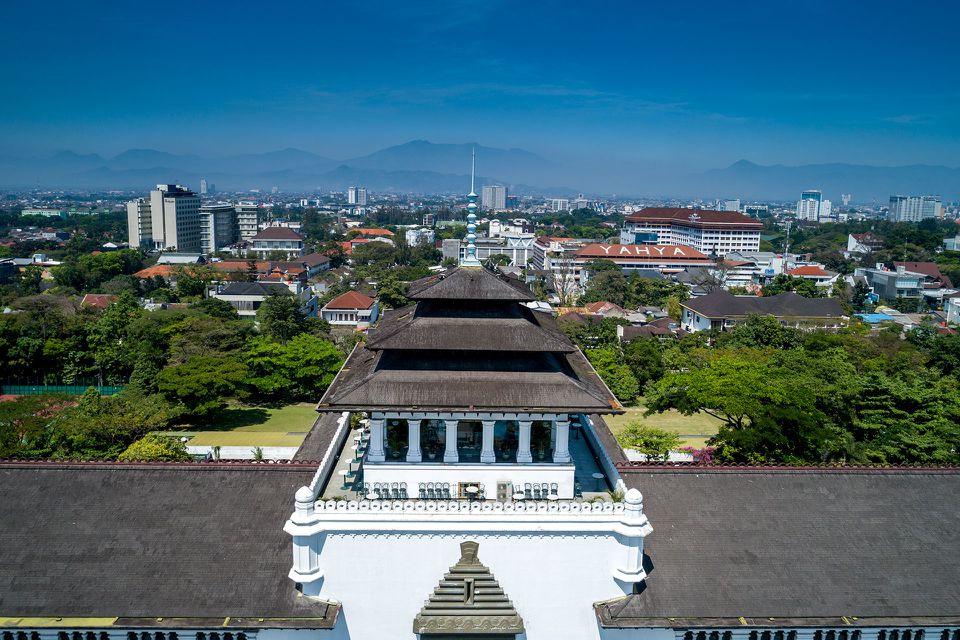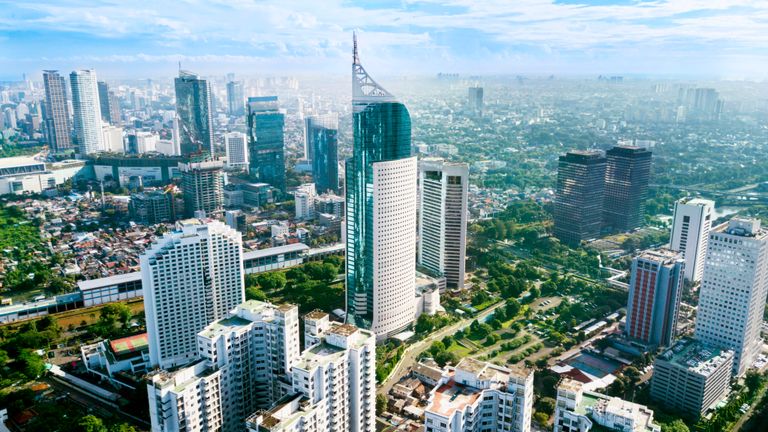
Pekanbaru is not your typical destination to visit in Indonesia. While it is not really off the beaten track, the international airport only serves two international destinations – Singapore and Malaysia. Being the capital city of Riau province in Sumatra, it serves mainly as as the largest oil-producing capital in the whole of Indonesia and the occasional burning of palm oil plantations during the second half of the year that results in transboundary haze.
Pekanbaru used to be a sleepy town before the Americans discovered oil in the region during the 1930s. Since the discovery, the town prospered and its economy got a huge boost from the oil revenues. Today, the city remains the oil capital of Indonesia.
In terms of food, I had an exposure module into the Sumatra food cuisine, although Padang cuisine is definitely more famous, as seen by the numerous nasi padang stalls in Singapore. I shall let the subsequent food pictures do the talking.

This dish is called siewmai and batagor (the fried one). The latter is fried fish dumplings usually served with peanut sauce. As for the siewmai that we are used to eating in Singapore, this one is halal, so it is made from steamed fish dumpling and vegetables. Both have a chewy texture and the chilli peanut sauce is surprisingly nice.

Next, we have the sate padang. Again, it is a different version from Singapore, as you can see from the sauce poured all over the satay. The sauce is really spicy, but I like it. The satay is made from beef, that has been precooked before that. The seller than scoops piping hot sauce over the satay and serves it on a banana leaf. While the satay in Singapore is raw meat grilled over a flame, this one has been boiled first and skewered.

This is how a typical street vendor truck looks like. The ketupat (rice cakes) is wrapped in leaves and strung to the truck on the right hand side. The big pot on the right is the spicy sauce for the sate.

The next morning, I had lontong for breakfast. Lontong is a dish made of compressed rice cake in the form of a cylinder wrapped inside a banana leaf, then eaten with curry sauce and vegetables. While we also have this dish in Singapore, the main difference is that for the vegetables in Pekanbaru, they added jackfruit which had been simmered in the curry. They also eat it with keropok (fried crackers).

For lunch, I had the ayam penyet. It is a fried chicken dish consisting of fried chicken that is smashed with the pestle against mortar to make it softer, served with sambal, slices of cucumbers, fried tofu and tempeh. I chose the chicken drumstick because that is my favourite part, even though the amount of meat is lesser than the breast meat. The highlight of this dish is the sambal chilli, which was spicy and packs a punch.

This may look like a cake, but it is actually durian pancake. It is known as apam balik in Indonesia, or min jiang kueh in Singapore, also known as a griddle pancake because the pancake is quite thick. The durian filling was very generous, and I had to stop the vendor from adding condensed milk into the middle because I do not like the dessert being too sweet. He also coated a layer of margarine on the top of the apam balik.

You can see the street vendor opening up the fresh durians to make the durian filling. While stalls in Singapore have durian pancakes too, they are usually stingy with the filling, so eating it is not as yummy as the one I had in Pekanbaru.

For dinner, I had ikan bakar. It is grilled fish over charcoal and sprinkled with shallots. ‘Bakar’ literally means burnt, but luckily my fish was not burnt. The fish is also coated with a sweet black sauce, eaten with some pickles and curry by the side. The troublesome thing about eating the fish is that it has many bones. This is a classic Indonesian dish and instead of fish, you could also have grilled chicken or squid.

On my last day in Pekanbaru, we woke up early to go out for a walk as it was car-free Sunday. Along the way, there were local markets selling various street food. This were fried potato balls that were selling like 20 cents for half a dozen balls. I don’t really like fried food so I did not appreciate this.

Who eats rice in the morning for breakfast? You may wonder, but in several Southeast Asian countries, eating rice in the morning is the norm. This is nasi bakar, steamed rice seasoned with spices and ingredients and wrapped in banana leaves, before putting over the grill to cook it. There were several options available, such as rice with fish or chicken. I do not like eating rice for breakfast, so I did not try it, but my host bought two back home.

Lastly, this was lunch time in Pekanbaru, before catching my flight back to Singapore. This is the famous nasi padang, where you get a plate of rice and order as many dishes as you wish to go with the rice. I ordered the rendang, a spicy meat dish braised in spices, herbs, and coconut cream resulting in tender beef and thick gravy. It was served with some vegetables by the side and really delicious. Although I have eaten more tender versions of the beef rendang, this is also satisfactory. My friend ordered the dendeng, made from beef that thinly cut then dried and fried before added with chillies and other ingredients. It is slightly more chewy than the beef rendang but also tastes nice because of the spices.
Of course there are several other types of dishes that I have yet to try, but due to my short time in Pekanbaru, I could not visit all the other places. I am glad that my host Azella has brought me around to try most of the important dishes and I had a good time eating my way through Pekanbaru. While some of the dishes are similar with Malaysia or Singapore, but the taste is also somewhat different due to the origins of the recipe. Hope to visit Padang or Medan soon to try out the local cuisine over there!


